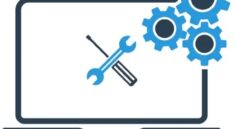SEO is a process to increase the organic traffic for your website. It is an ongoing process and should be done consistently to get higher rankings in SERP (Search Engine Results Pages). Here are some on page SEO techniques that can help you achieve higher rankings:
Keyword Research
Keyword research is an important part of SEO. It helps you to determine the right keywords for your content and to find the right keywords for your content. Keyword research involves conducting searches on search engines, analyzing search results and choosing relevant keywords that will bring visitors to your website. You can use keyword tools like Google AdWords Keyword Planner or MOZ Keyword Explorer to conduct keyword research quickly and effectively.
Use the keyword in the Title Tag
- Use the keyword in the Title Tag
- The title tag should be between 15-60 characters long and contain keywords that are important for ranking. This can be difficult to get right, as you don’t want to overdo it so much that your page looks spammy or unnatural. (Google will penalize you for this.)
- Create unique titles for each page on your site, rather than using a template across all of them. For instance: “How to Improve Your SEO” may not be ideal because it’s too generic. Instead, try something like: “How To Improve Your On Page SEO With These 5 Simple Tips”. This makes it easier for users and search engines alike to locate relevant content quickly and easily on your website as well as other sites related to yours!
Use the keyword in H1 tag
Let’s start with the H1 tag. The first heading on your page is very important because it’s the first thing Google sees and determines what your page is about. The H1 tag should be used to describe what your page is about, not just repeat keywords over and over again, which can actually hurt you in ranking because it makes it seem like you don’t know what your content should be about!
In our example above, we see that they wrote “On Page SEO Techniques for Higher Rankings”. This shows Google that this article is going to teach us how to do On-Page SEO techniques for higher rankings!
Use the keyword in URL of the page
The keywords you’re targeting for your website should be placed within the URL of each page. The best practice is to place them in the beginning and end of the URLs, so that search engines can easily recognize what those pages are about.
Use the keyword in Image Name, Caption, Title and Alt Text
Another important on-page SEO technique is to use the keyword in image names, captions and alt text. Alt text is an image’s description and it’s extremely important for people with disabilities as well as search engines. The alt tag should be descriptive but not too long (no more than 150-200 characters). Search engines might also give you a boost if your title tag contains your most relevant keywords, or if you include all of the main ones in H1, H2 headings throughout your page.
Use the keyword in Meta Description
A Meta Description is the snippet of text that shows up in search results and it is a great place to include a call to action, like “click here” or “learn more.” The Meta Description should be between 150 and 160 characters so that it fits nicely on your page without being cut off by Google. A good rule of thumb for writing Meta Descriptions is not to keyword stuff them, which means you shouldn’t use the exact same keywords repeatedly within the same set of sentences or paragraphs (for example: “Get cheap car insurance quotes online!”). Instead, try adding some variety into your descriptions by including some additional information about what makes your business unique.
Finally, ensure that all meta descriptions are unique; this means they can’t just be copied from one page or website onto another. If you have multiple pages similar enough that they share common elements such as content or images then make sure each individual page has its own unique description!
Write a Meta Description with a call to Action
The meta description is a snippet of text that appears below the title of your page in search results. It should be less than 160 characters and unique for each page on your site, as it can vary depending on how many words a user searches for. It’s important to keep in mind that this snippet will appear when people are scanning through results so it should be written for humans, not search engines.
Place LSI keywords
- LSI keywords are related to your main keyword. For instance, if you’re selling pet food online and your main keyword is “dog food,” then an LSI keyword might be “small dog food” or “large breed dog food.”
- Place LSI keywords in content for higher rankings in Google searches. These words should be mentioned naturally within the article on which they appear.
- Use LSI keywords in meta tags and URL to further boost rankings. Meta tags play a major role when it comes to search engine optimization (SEO). The title tag is arguably the most important one since it appears on every page of your website and will pop up first whenever someone does a Google search for one of your products or services. That’s why you should optimize this title tag with relevant LSI words that are related directly back towards what people would type into their search bar before clicking on any results shown by Google’s algorithms!
- This is not difficult, but it can easily go in the wrong direction. It is best to hire experts from an SEO agency in Sydney, so that everything goes according to plan.
Content should be more than 300 words
If you want to rank well in Google, your content should be more than 300 words.
Google will see your page as a valid resource if it’s got plenty of substance and not just empty fluff. The more information you provide on the topic, the higher your ranking will be within search results.
In addition to having a lot of text and information, make sure that it’s written in a way that is easy to understand so that readers can easily find what they’re looking for. It also needs to be unique and not copied from other sources; this helps with brand trust and authority, which translates into improved rankings over time.
And lastly – make sure you engage with your audience by writing interesting/funny/thoughtful pieces that not only focus on providing them with valuable advice but also encourage them share it with their friends via social media sites like Facebook or Twitter! This will allow Google bots pick up these links which increase PageRank scores even further!
Internal Linking to other relevant pages on your site
Internal linking is another great way to improve your on-page SEO. When you link to another page on your website, both pages will be included in the search engine’s index. This can mean that when someone searches for a term related to one of those pages, both results will appear higher up in the rankings.
Additionally, internal links also provide more context and information about your website as a whole – which is important for users who are looking at multiple sections of your site at once, but may not have time (or the desire) to go through every page individually.
We hope that this article helped you understand how to perform On Page SEO Techniques for Higher Rankings. You can also use these techniques to see if your current website is already optimized. If not, then it’s time for some changes!





